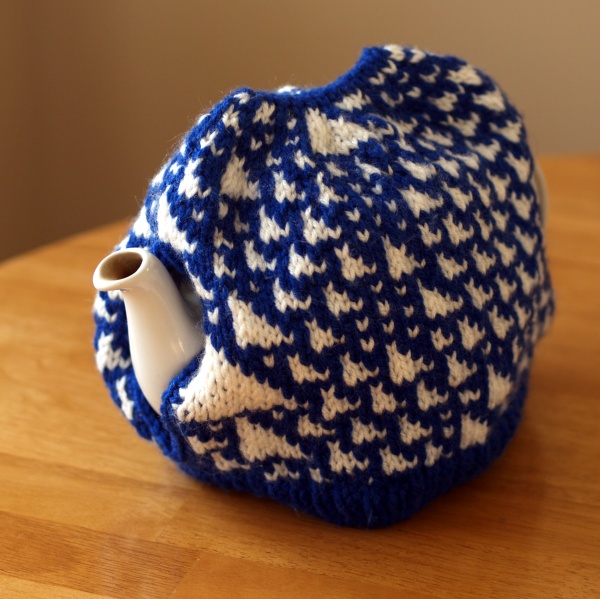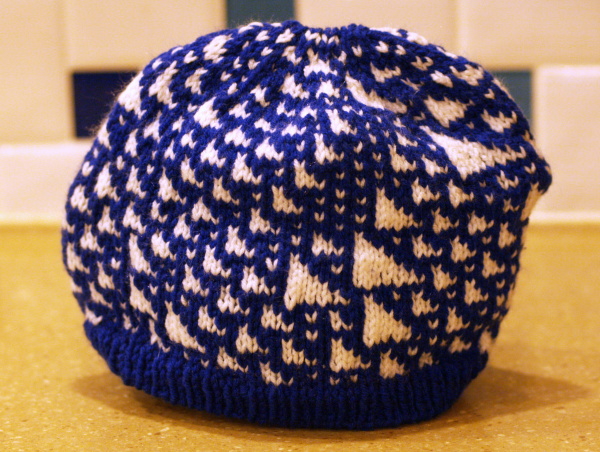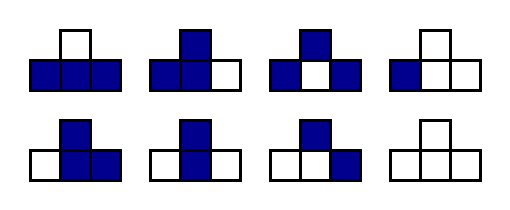Here's my second try at a cellular automata tea cozy; this one was commissioned.
It fits a 1L (six cup) tea pot.

The way I cut it open (the 'steek') was a little clumsy and didn't
sit perfectly, and it turned out that the recipient doesn't mind the
handle of the teapot getting hot, so I made him another that's a little
larger, and doesn't have the holes. (I think the target tea pot is both
taller and skinnier than mine.)

The choice of rule 110 was fortuitous. The previous one had been rule 30, and that was something of a chore to work out. I got good enough at rule 110 to be able to knit it while chasing a toddler around a playground. I think the difference between the states having a 5/3 or a 4/4 color split is crucial; in this case, I memorized the three white states, and then everything else was blue.
- Cast on 100 stitches (un-steeked version has 106), using a tubular cast on, join into a loop, and knit 1x1 rib in blue for about an inch. Place a marker at the starting end. I used the directions at TechKnitter for a tubular cast on.
- Simulate the chosen rule for a few rows; I have a multi-page
hand-written postscript document that does this. Rule 110 settles down
into regular patterns, and has chaotic looking areas where the patterns
merge. Long repetitions of a single color will be a problem, since the
other color needs to be carried along the back in this case. I found it
convenient to pick a random seed, then let the pattern settle down until
some regular areas could be seen.
Rule 110 looks like this (binary 01101110 = 110):

- With this in mind, work your seed row, then continue in pattern for about six inches. If it looks like you'll be stuck with one color for a while, lay the unused color across the working thread for some stitches, so that it's caught along the back.
- My narrowing pattern was heavily borrowed from the rib hat at TechKnitter; I found that it worked
better to do my first narrowing at quite a steep rate, all in one row,
but then to knit for four plain rows after that. So my first decrease
was to decrease by three quarters, so that every third stitch was a
k2tog.
To make the pattern do something reasonable across the decreases, it seemed most sensible to consider the first of the two stitches being knitted together as the one that disappears, since it ends up behind the other stitch as shown.

- After the first steep decrease, knit four plain rows, then decrease again, this time making two stitches of every three. This is followed by another two plain rows, still in pattern.
- The last decrease is done all in blue, and is a row of k2tog, which is then followed by grafting the remaining 25 stitches together.
- Using a sewing machine set to a closely spaced zigzag stitch, sew through two adjacent columns of stitches, and across the top and bottom between them.
- Carefully snip down the middle of the row of stitches, then with a
crochet hook, crochet around the edge. Darn ends, etc.
